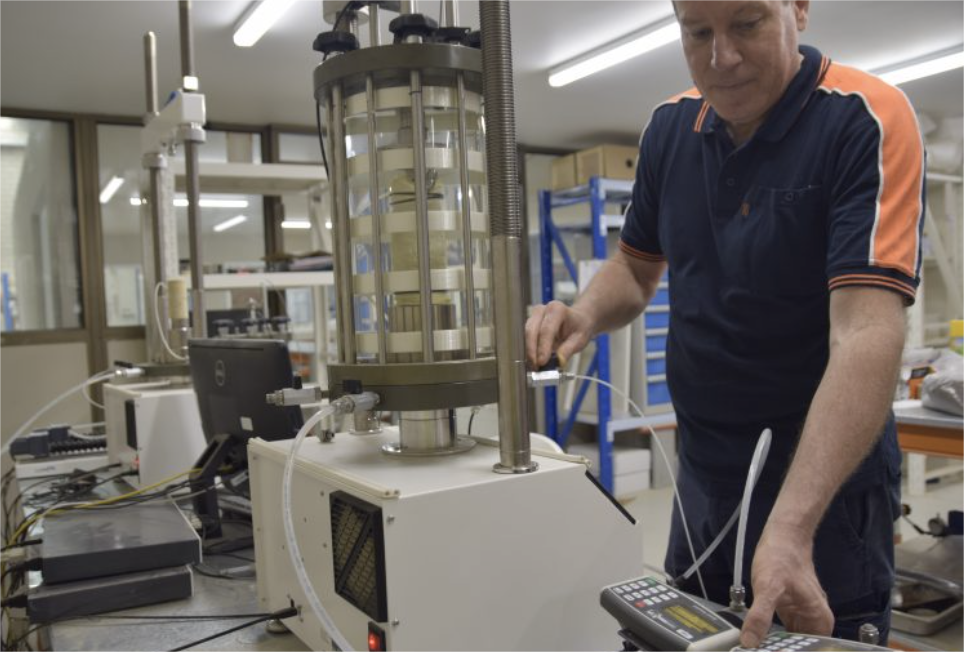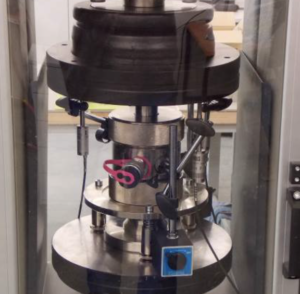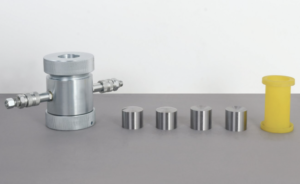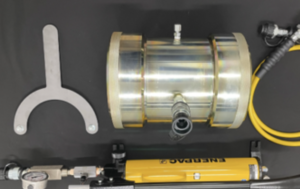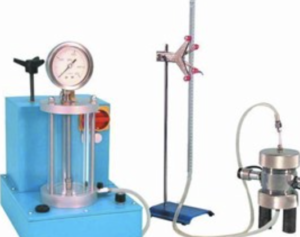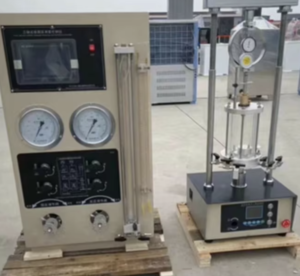Why Do We Do Triaxial Tests?
In geotechnical engineering, understanding how soil behaves under stress is fundamental to building safe and reliable infrastructure. One of the most trusted tools for this purpose is the triaxial test. But why do we do it? Simply put, the triaxial test allows engineers to replicate real-world stress conditions in a controlled laboratory setting. From design foundations to predicting slope failures, this test provides the data that supports virtually every major soil-related engineering decision.
Understanding Soil Strength Under Real Conditions
Soil doesn’t behave the same in every situation. Under heavy loads, in wet conditions, or deep underground, its strength and deformation characteristics change1. The triaxial test helps simulate these variations by applying:
- Confining pressure2 to represent the surrounding soil load.
- Axial stress to mimic construction or natural forces.
- Drainage conditions to observe how water affects strength.
This setup enables engineers to observe how a soil sample responds to stress paths similar to field conditions3, such as beneath a building, embankment, or tunnel.
Simulated Stress Scenarios in Triaxial Tests
| Test Type | Drainage Condition | Common Application |
|---|---|---|
| UU (Unconsolidated Undrained) | No drainage | Short-term loading, rapid fill |
| CU (Consolidated Undrained) | Drain before load | Foundations, slopes, embankments |
| CD (Consolidated Drained) | Full drainage | Long-term loading |
By mimicking reality in the lab, triaxial tests provide insight into soil behavior that simple field inspections can’t reveal.
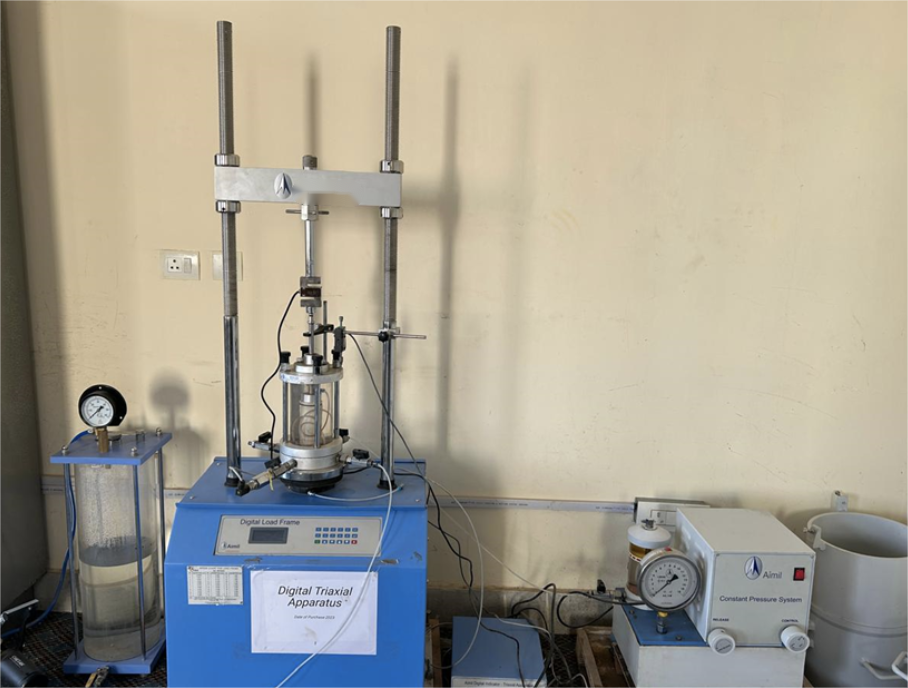
Determining Key Parameters for Design
One of the main reasons we perform triaxial tests is to obtain critical soil strength parameters4 that directly impact design calculations:
- Cohesion (c): The internal bonding of soil particles.
- Friction Angle (φ): The resistance to sliding between particles.
- Pore Water Pressure (u): The effect of water within soil pores.
- Stress-Strain Behavior: How soil deforms under load.
These values feed into Mohr-Coulomb and advanced constitutive models5, helping engineers calculate:
- Bearing capacity
- Slope stability
- Retaining wall pressure
- Settlement predictions
Example: Parameter Output from Triaxial Testing
| Parameter | Value (Typical for Stiff Clay) | Engineering Use |
|---|---|---|
| Cohesion (c) | 50 kPa | Foundation bearing design |
| Friction angle (φ) | 25° | Retaining wall pressure analysis |
| Undrained strength (Su) | 100 kPa | Slope and embankment stability |
| Axial strain at failure | 4–10% | Settlement prediction |
These results are essential to preventing structural failure and ensuring long-term performance of infrastructure.

Evaluating Different Soil Types and Conditions
Every soil behaves differently—soft clays, dense sands, and silts6 each have unique characteristics. Triaxial testing helps evaluate how these soils will behave under various stress and drainage conditions7.
What We Learn from Different Soils
- Clay: Shows plastic deformation and is sensitive to pore water pressure.
- Silt: Moderately cohesive, sensitive to drainage and compaction.
- Sand: Exhibits dilatancy (volume increase during shear), brittle failure in dense states.
- Gravel: Needs larger sample sizes, tested for stiffness and strength.
Soil Type Comparison Table
| Soil Type | Typical Failure Mode | Strength Behavior |
|---|---|---|
| Soft Clay | Bulging or ductile shear | Highly compressible, strain-softening |
| Dense Sand | Brittle shear plane | High friction, dilative |
| Loose Sand | Uniform compression | Low shear resistance |
| Overconsolidated Clay | Shear banding | Brittle, high pre-consolidation pressure |
Testing under varied confining pressures and saturation levels8 reveals how soils behave across a wide range of real-world scenarios.
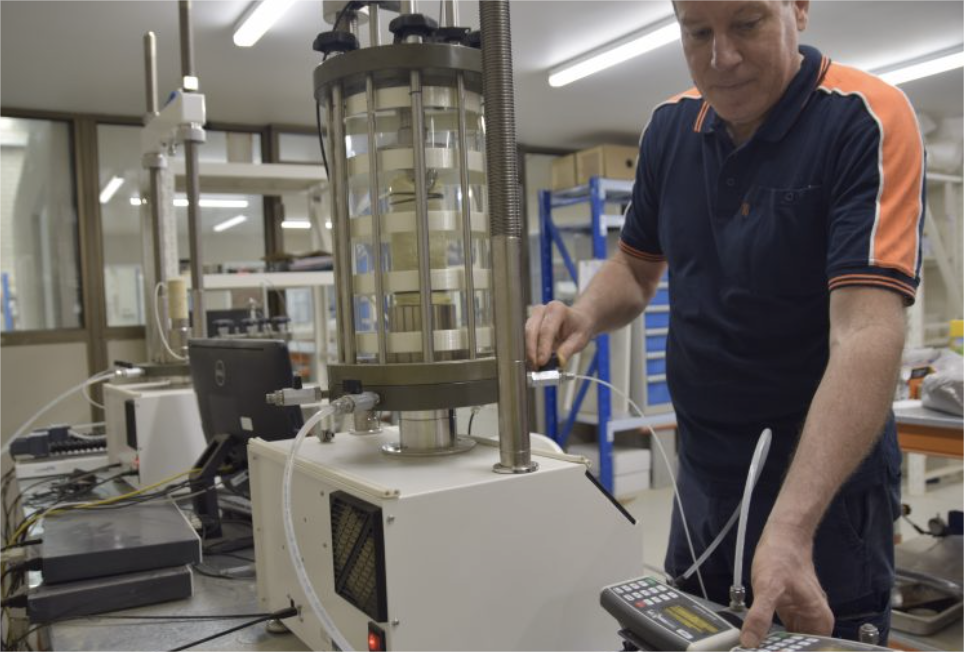
Supporting Advanced Soil Models and Simulations
Modern geotechnical analysis often involves numerical simulations, like finite element modeling (FEM), to predict soil-structure interaction. These models require reliable input parameters, many of which come directly from triaxial tests.
Triaxial data supports:
- Constitutive modeling: Simulating nonlinear behavior under load.
- Stress path analysis: Understanding soil response under cyclic or staged loading.
- Calibration of advanced models: Like Modified Cam-Clay or Hardening Soil Model.
Data Use in Geotechnical Software
| Simulation Tool | Parameters from Triaxial Test |
|---|---|
| PLAXIS 2D/3D | c, φ, E (modulus), ν (Poisson’s ratio), Su |
| FLAC | Mohr-Coulomb, Cam-Clay, stress-strain data |
| GeoStudio | Shear strength and pore pressure curves |
By providing detailed stress-strain and pore pressure responses, triaxial tests are indispensable for modeling complex geotechnical problems in a virtual environment.

Conclusion
We do triaxial tests because they offer the most comprehensive, real-world insight into soil behavior under stress. From determining key strength parameters to evaluating soil response and powering advanced simulations, the test is a cornerstone of modern geotechnical engineering. When accuracy, safety, and design reliability matter, the triaxial test is the go-to method for understanding what lies beneath our feet.
-
Understanding these characteristics is crucial for engineers to design safe structures and predict soil behavior under various loads. ↩
-
Exploring this topic can provide insights into soil behavior under load, essential for construction and stability assessments. ↩
-
Learning about stress paths helps in understanding real-world soil behavior, which is vital for effective engineering solutions. ↩
-
Understanding these parameters is crucial for effective design and safety in engineering projects. ↩
-
These models are fundamental for predicting soil behavior under various conditions, essential for safe engineering practices. ↩
-
Understanding these soil types is crucial for construction and engineering projects, as they impact stability and design. ↩
-
Exploring this topic can enhance your knowledge of soil mechanics, vital for effective civil engineering and construction practices. ↩
-
This knowledge is essential for predicting soil performance in different environmental conditions, aiding in safer construction. ↩

